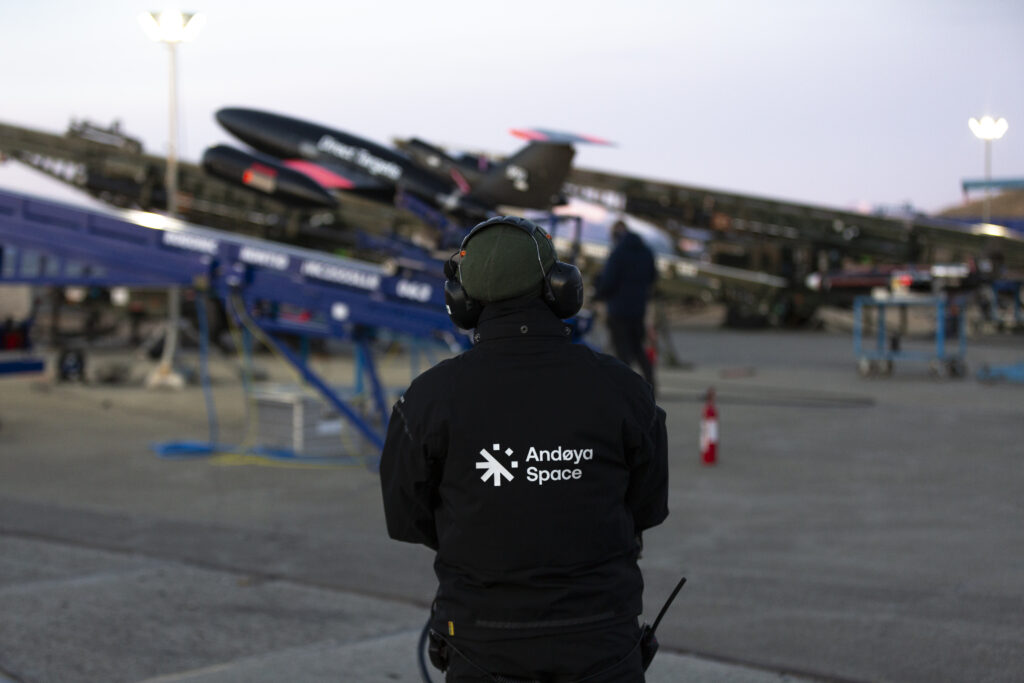The past weeks, drones have been tested on a large scale outside of Andøya. The test range is quite unique in a European context.

Over the last weeks, Andøya Space Defence has for the first time tested new drone technology on a large scale outside of Andøya. Andøya Space Defence offers pilots, facilities, simulator and more to test different types of drones for various customers.
– This is quite unique in a European context, says Odd Arne Andreassen at Andøya Space Defence. – We can set up an almost unlimited test area, where the drones can fly and try out everything they need to.
Unlike other activities at Andøya Space, drone testing does not require maritime areas to be closed for traffic. Vessels may be present in the area where the drone flight is taking place. Andøya Space has procedures and systems to ensure that a required and safe distance is kept.
– Setting up a test area of for example 100.000 square kilometers is no problem for us, Andreassen adds.
Jet-powered drones from Airbus
This week, twin-engine high-speed jet-powered drones from Airbus Target Systems & Services were tested at Andøya Space. These drones are approximately three meters long, with a wingspan of two and a half meters, and can fly at up to 250 meters per second.
– The drones simulate different types of aircraft, which the customer’s radars and air defense systems must detect and defend themselves against, says Andreassen.
By equipping the drones with different transmitters and radar reflectors, the drones can look like almost any kind of aircraft to the radars.
– In addition to the almost unlimited size of the test area, the main advantage of testing drones at Andøya Space is the flexibility and cooperative spirit in which we conduct the complex flight test, underlines Frank Härtel, director of Airbus Target Systems & Services.

Additional flight permit not needed
Andøya Space has permission from Norwegian aviation authorities to fly drones of the “Specific” class in Norway, also on behalf of customers.
– This means that we are responsible for the flights and their compliance with Norwegian aviation regulations. Thus, the customer does not need to obtain permission to fly in Norwegian airspace themselves, says Andreassen.
The new drones were tested with different types of engines and instruments at Andøya Space, to check that everything works as it should in the air.
– The drones already function well, but Airbus wanted to test the latest improvements they have made on the drones, Andreassen says.
– We brought a full set of test items with us, from new drone types, to new digital functions and new ground operation setups. We were able to test everything successfully, Härtel says.
Testing drones extensively
Around 20 employees from Andøya Space were involved in the testing, and about the same number of people from Airbus.
– Each test flight only lasts an hour or so, but requires many hours of preparation first, says Andreassen.
The equipment to be tested must be mounted on the drones, and the pilots perform the entire flight in a simulator first. The test area must also be closed to air traffic. This is done by air traffic control at Andøya Airport. Other preparations are also done.
– When we only have an hour to fly, everyone must know exactly what to do and when, says Andreassen.
More drone tests throughout the winter
More drone tests will be carried out for Airbus at Andøya Space during the autumn and winter.
Andøya Space tests drones both for military and civilian use, for many different types of customers. In addition, Andøya Space trains personnel in drone operations, and has the knowledge and experience necessary to obtain certification from Norwegian aviation authorities to operate most types of drones in Norwegian airspace. In collaboration with Andøy videregående skole, upper secondary education in drones is also offered.
More information
Contact Andøya Space Defence.
